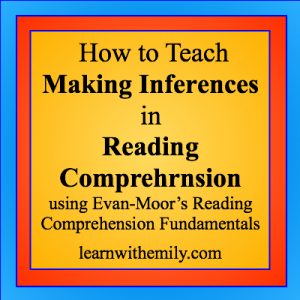This post may contain affiliate links. Affiliate links use cookies to track clicks and qualifying purchases for earnings. Please read my Disclosure Policy, Terms of Service, and Privacy policy for specific details.
The ability to comprehend written language is the foundation for a successful education. Although there are many facets to reading comprehension, this article explains how to teach making inferences in reading using Evan Moor’s Reading Comprehension Fundamentals. I received a copy of Reading Comprehension Fundamentals Grade 2 in exchange for writing about my experiences.
What are Making Inferences in Reading?
Inference skills are the ability to understand information that is not explicitly stated. In reading comprehension, a child will better understand a text if they can draw conclusions and make inferences about information based on what they already know. For example, if a reading passage said, “She washed the dishes and then mopped the floor,” the reader could infer that the setting of the sentence was the kitchen.
How to Evaluate Inference Skills:
I used Evan-Moor’s Daily Reading Comprehension book to evaluate my 2nd grader’s reading comprehension skills. CLICK HERE to read my complete review of Evan-Moor’s Daily Reading Comprehension series. After reading a passage, I noticed that my autistic daughter would consistently miss comprehension questions that required her to make inferences. In the following example, since the passage talked about a “beak” and not a “mouth” explicitly, she was not sure of the answer. I knew I needed to clearly teach her more about how to make inferences.


How to Teach Inference Skills to Improve Reading Comprehension:
The National Reading Panel (2000) noted that even very good teachers may have difficulty modeling critical aspects of strategic reasoning necessary for teaching reading comprehension skills. Reading comprehension can be very difficult to teach. A strong reading comprehension curriculum, like Evan-Moor’s Reading Comprehension Fundamentals, has helped me teach specific comprehension skills that have improved my children’s reading comprehension skills.
Step 1: Get Evan-Moor’s Reading Comprehension Fundamentals.
Reading Comprehension Fundamentals will help you teach your child about making inferences in reading. CLICK HERE to read my full review of Reading Comprehension Fundamentals. Since assessment results indicated I needed to teach inference skills, I pulled up my copy of Reading Comprehension Fundamentals grade 2 and found the corresponding section. I printed the pages on making inferences and used them to teaching my daughter how to make inferences when reading. Here is an example of part of a page that explicitly teaches a child how to make inferences: 
From the above excerpt, you can see that the instruction on making inferences is clear and direct. More sample pages from Reading Comprehension Fundamentals can be viewed on Evan-Moor’s website.
Step 2: Provide Guided Practice as Needed.
After learning about making inferences in reading using Evan-Moor’s Reading Comprehension Fundamentals, your child may be on their way to making inferences without any further inaccuracies. Other children, like my 2nd grader, need additional guidance to help develop their inference skills. The Reading Comprehension Fundamentals book provides clear instruction. Guided practice will help the child solidify the process of making accurate inferences.
My daughter needed guided practice on making inferences. When providing guided practice, we refer back to what she learned on the inference instructional pages from the Fundamentals book. After reading a passage from Daily Reading Comprehension, my daughter will attempt to answer the comprehension questions. If she is unsure of an answer requiring inferences, I provide guided practice by walking her through the thought process to make the needed inference. I point out areas in the passage that provide clues to answer the inference question.
In the photos above, my daughter was unsure of the correct answer. She thought that maybe Dr. Suess was a reader. We re-read the parts of the passage that gave the clues. With some prompting about which choice was about drawing pictures and being good at art, my daughter was able to figure out Dr. Suess was an artist. The next day, she needed less prompting to answer the inference question accurately. As we continue to practice inferences regularly, her inference skills will become more and more independent.
Conclusions on Making Inferences In Reading to Improve Comprehension
According to Marzano (2010), inference skills are foundational to higher order thinking. Evan-Moor’s Reading Comprehension Fundamentals Series can help you teach your child how to make accurate inferences in reading. This reading comprehension series is an amazing resource that is helping me teach my children critical reading comprehension skills.
Shop must-have reading comprehension resources for classrooms and homeschools
Homeschool bundle up to $160 OFF! Saving you money on resources and time on lesson prep!
Further Reading
CLICK HERE to learn about the factors that influence silent reading comprehension.
CLICK HERE to read about reading comprehension strategies.




